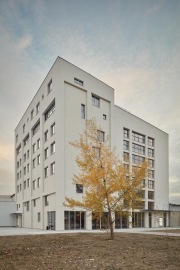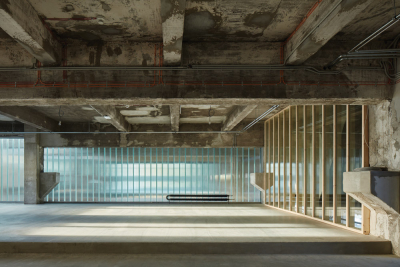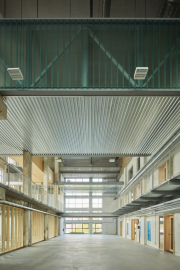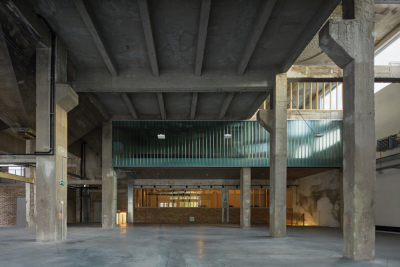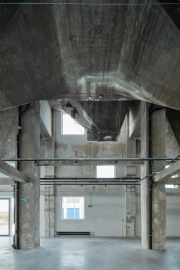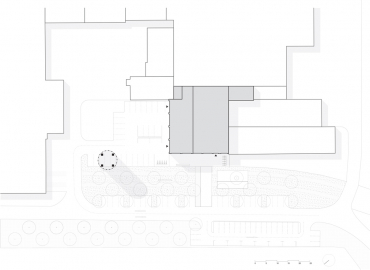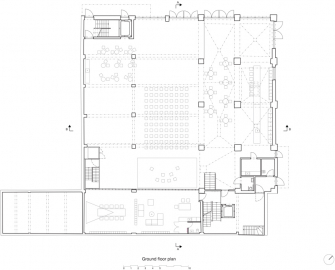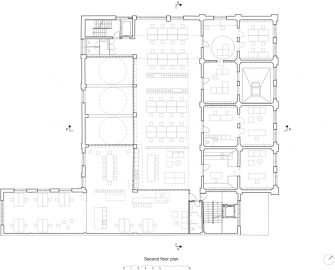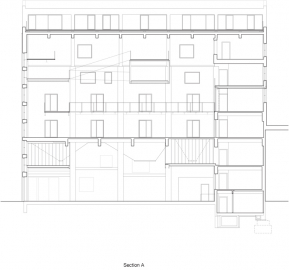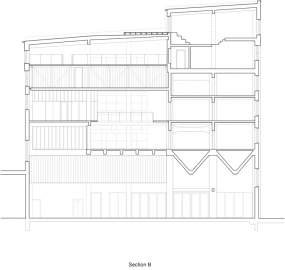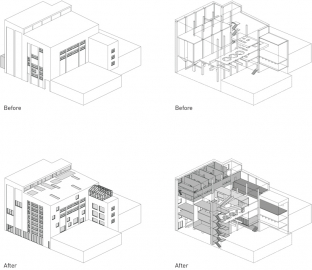Adaptation of the former factory Mlynica
Adaptation of the former industrial building Mlynica combines living and working with the ambition of creating a unique community on a vast brownfield site in Bratislava.
The building of Mlynica is part of a large post-industrial area of Light Building Materials in Bratislava. Since 1960s, porous prefabricated concrete blocks, slabs and panels have been produced here. Production took place until 1992. After privatization, the new owners sold off the complex and a gradual disintegration of the structures began.
The architectural design builds on the structural logic of the original building. The reinforced concrete frame filled with porous concrete masonry façade is retained and new programme is inserted into the existing container. The façade is opened up purposefully in places where it aligns with the new layout, without compromise and with respect to the load-bearing capacity of the existing perimeter structures. The new openings have a free and readable composition as opposed to the original rational mesh of window openings typical of an industrial building.
The object of Mlynica is vertically divided into three functional blocks. The design of the individual parts of the new programme – event space, administrative premises and flats –communicates via the central space of the former production hall.
The design builds on the contrast between old and new, highlighting the quality of the original building. With this approach it is necessary to get rid of unnecessary layers in order to emphasize the structural logic of the building and thus maximise the potential for its new use. The reconstruction transforms the former industrial complex used for purely technical production into a modern mixed-use building for cultural events, businesses presentation, administration and in smaller part open plan living.
The existing reinforced concrete beam and column structure with masonry infills from porous prefabricated concrete blocks was cleaned and if needed reinforced. Thermal insulation layer was added and the envelope was finished with plaster. Original industrial steel windows were replaced with new aluminium windows with light profile.
New horizontal constructions were used accordingly to the possibilities of the original structure and consist mostly of reinforced concrete slabs or steel frames with ceramic units. Vertical partitions are composed from timber framed walls with glass or plywood panels, Profilit glass walls or solid brick walls. Original surfaces were cleaned, repaired but left unpolished.
Electrical wiring, plumbing, heating and ventilation are all revealed and form a visible "vascular system" of the building.

